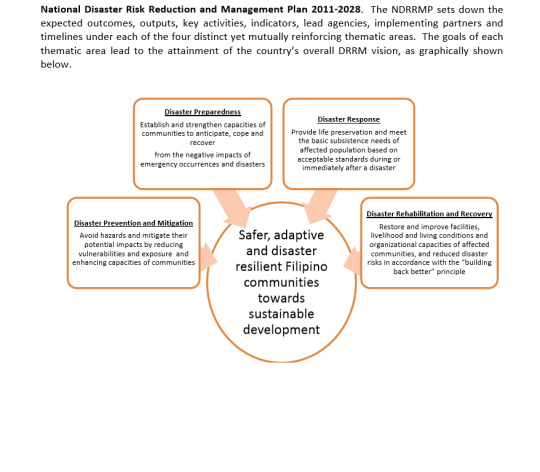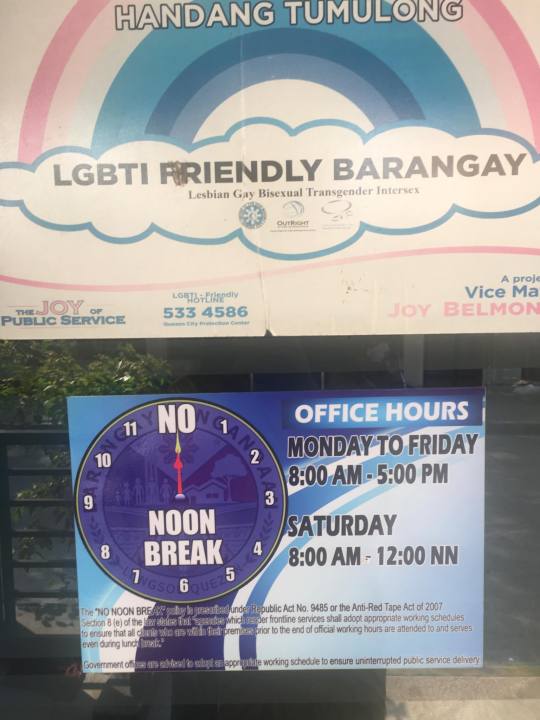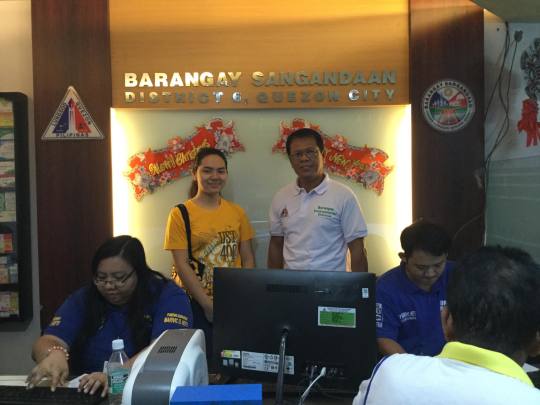#Most people's religious practice is based around active interaction with God and Its Faces (and for that matter much of the public
Explore tagged Tumblr posts
Text
[ B A L E S T R A . . . ]

“A great battle is a terrible thing,“ the old knight said, "but in the midst of blood and carnage, there is sometimes also beauty, beauty that could break your heart.” – George R R Martin
Real Name: Esther Meier (Nicknamed Essie at school, but she hates it)
Age: 19
FC: Alexia Giordano
Species & Class: Celestial Knight
Guild: Moonstone
Description of In-Game Powers: (Sorry this is super long. This is largely based off of DnD Aasimar and Paladins, but without trying to bring in actual divine powers. Instead I tried to make it more centered around a player’s perception of themselves and their actions. If this doesn’t fit with other species or the world, let me know!)
Celestials are what could arguably be defined as a light-based typically Moonstone-aligned species similar to sylphs or fae but without the connection to the environment around them. Instead, they seem to draw power from their own actions and convictions, making them a lot more internal than elemental species. Their path and their thoughts about their path define their progression. This makes their dialogue options, interactions with other PCs, and their approaches to passing certain levels very important in how they develop and the skills they gain. But it also makes their own assessment of their actions pivotal in their direction, unlike many other species. They don’t gain skills just by completing tasks, but based on how they perceive how they completed these tasks. Usually Celestial players tend to go for high Psyche/Charisma stats to boost their mental fortitude and balance. But Balestra doesn’t really understand balance beyond proper footwork. She makes up for this with a high willpower that shot even higher after her return to level 1. Willpower is a double-edged sword for Celestials since it enhances however a Celestial feels about their own actions regardless of whether this has a positive or negative effect, whereas other stats merely increase the potential for a Celestial to regard their action as good or heroic.
The interaction between player actions, player perspective, and leveling opportunities makes them a relatively unpopular species choice except for those gamers who like to save before every major NPC interaction and religiously google the different effects of game routes and encyclopedic lore entries before making any choices. In other words, most people find them tedious with a slow ramp and unpredictable leveling. Now that players can’t exit the game or return to save points, they’ve become pretty rare as they tend to die off quicker. But if they survive long enough and can find a good balance between mental stats, goals, and their class, they can become power houses. If not, they tend to be ineffective or even self-detrimental. An unstable Celestial can be equally powerful, but usually just as destructive to themselves as those around them…whether intended or not.
While they have the ability to learn flight, like sylphs, they have large feathered wings instead of diaphanous insect wings. Unlike fae, some classes of Celestials can even use these as melee weapons or shields, especially with specialized armor. Celestials also tend to have a strong affinity to light and some classes can practice light magic. The power of this is also connected to their perception of their actions, along with stats like psyche and charisma.
Regardless of other stats, Celestials’ main buff is in their luck, which extends to the rest of their party when in close proximity. In truth, Balestra didn’t even want to be a Celestial (or a Moonstone player, for that matter). But her school friends wanted that luck buff, and as always she played along. There was some fault with her copy of the game though, and when facing an attack against her party where she should have died, she ended up using up all of her luck buff (and even her luck stat) to reset to the beginning level while her friends died. In turn, her luck stat points randomly shifted to other traits. She can’t decide if she’s one of the luckiest or unluckiest Gem Quest players. In effect she died. All her items are gone, which happens to dead players. And all of her level progress disappeared. But something happened when she was reset. Not only does she have a luck of zero while still retaining all the negatives of the Celestial species; she lost the wings, flight abilities, and light affinity that are the only other Celestial perks. And moreover (and much more pressing), she can’t seem to use potions or magic on herself. Who knows if she can even get out of the game now if she can’t use Relinquium on herself.
Place of Birth: Berkshire, UK
Appearance:
She is most well known for defeating the wyrm Miro in nothing but the default character attire of white tunic and leather pants (mostly because she was on her second playthrough by then, trying frantically to regain all her lost ground, and partly not caring whether she died or not). While she does have a suit of engraved silver armor which she tends to wear in more active levels, and isn’t opposed to trading out her more martial attire for something a bit more flowy and delicate (god knows she needs whatever charisma bonus she can get on the levels that don’t rely on stabbing things), the beginning character outfit has become a bit of a calling card for her, along with her wild halo of curls. No matter what, she prefers to stick to more medieval or renaissance inspired clothing.
“Delicate in every way but one (the swordplay) God knows we like archaic kinds of fun (the old way) Chance is the only game I play with, baby We let our battles choose us” – Glory and Gore, Lorde
Places Most Likely to be Found In-Game: When not clearing levels, she tends to wander the Valley of Monsters since it’s Destrier’s home level. She’s found he’s easiest to deal with in a setting where he belongs, and becomes increasingly harder to control in more incongruous places (Few can forget that disastrous foray into the peaceful Moonstone haunt of the Gardens of Finvarra where Balestra and Destrier learned that no, eating fae NPCs does not count as eating fairy food. Balestra is needless to say not very popular among her guild). Beyond being known as a strange pariah figure people tell stories about having glimpsed speeding through levels in little more than the default character attire, she has gained a reputation as a pretty capable monster hunter for those in the market for parts but unable to handle battling beasties themselves. So she tends to spend more time in the monster-infested areas of levels than most players.
Current Inventory:
Not really inventory, but has somewhat tamed (keyword somewhat) a griffin she calls Destrier. To her that’s basically naming something horse, but she’s killed so many other mounts that she tries not to get attached. The two get along like a house fire. He has all the worst attributes of cats and birds; namely wanting to steal and then eat anything remotely shiny, wanting to kill and then eat anything that moves whether alive or not, not wanting to eat anything actually given to him as food because he didn’t get to kill it himself, being at once stubborn and proud while impressively lazy, and being altogether too smart for his own good and too stupid for Ess’s.
Halberd x 1
Quicksilver Longsword x 1 (This magical sword has the ability to change forms, shifting between rapier, longsword, knife, zweihander, and other bladed weapons which provide different stat bonuses. But it does have the distinct drawback of slowly poisoning its wielder with every use, lowering their hp and psyche dramatically for a period of time. The more its transformation powers are activated, the longer this effect lasts, which can eventually lead to an almost permanent madness. It has also been rumored to be addictive, causing the user to want more and more to shift between its forms.)
Rope x 1
Fire Salamander Gizzard x1 (Rare drop from Fire Salamanders used as a fire starter. Not as fast or reliable as a potion, and a lot more work to acquire. But if you can’t use potions you learn to make due)
Astragali Fortuna x6 (hippogriff knucklebones covered in runes which must be coated in the intended target’s warm blood to be used. They are rolled and then either buff/nerf a stat or induce the effect of a random potion in the game’s database depending on the symbols rolled. The probability of which potion effect is induced depends on the rarity of the potion. This effect does not last as long as a real potion’s. It is about as often detrimental as helpful to its target and is regarded by most players as unreliable for both personal and offensive use. A high luck score increases the chance of a positive outcome, as in part does willpower. But the exact formula for the RNG behind the item is unknown, and most players regard it as a possibly disastrous joke item.)
Venison Jerky x10
Full suit of armor x1 (she usually just wears bits and pieces since it does tend to lower her dexterity)
Beastmaster’s Gorget x1 (Ess actually isn’t a rider, but she needed that speed of a mount to regain her level progress, and she desperately wants to fly again. So she still uses a mount despite not having any of the helpful traits of a Rider player like knowing where your mount is, being able to call it, or being able to control its actions in battle. The gorget helps limit some of those problems. She thinks of it as a “Rogue Griffin GPS” with a bit of a defence buff. It ties him to her by a certain distance though it doesn’t really force him to obey her at all)
Strongest character trait: Stubborn, and she hates that about herself despite how many times it has saved her.
Strengths: creative and determined when she has a goal. She’s had to go about the game very differently her second time around, but she hasn’t succumbed to any of her handicaps yet and in many ways is a stronger player now than she ever was with her original group as her original Celestial Knight self.
Weaknesses: Conflicted, overthinking, and overly controlled when in reality she’s a lot more instinctive than she allows herself to be. She still has a hard time trusting herself
Player Stats: (I’m going based off of an average individual stat score being 5, so the average total should be around 50. But if that doesn’t seemed balanced, please let me know! Also, after Balestra used up all of her luck returning to level 1 instead of dying, her luck stat was redistributed randomly to her other stats –hence her having 2 sets of numbers. She thinks of herself like a paladin pre-glitch and something entirely different afterwards. The closest she can think of is cursed).
STRENGTH: 6 || 7
DEFENCE: 5 || 6
CHARISMA: 2 || 2
PSYCHE: 2 || 2
WILLPOWER: 6 || 9
CAUTIOUSNESS: 2 || 2
AGILITY: 8 || 8
ENDURANCE: 6 || 7
INTELLIGENCE: 7 || 7
LUCK: 6 || 0
Destrier Stats: He was once a fightable monster, right? So that means he has to have stats. I just figure he’d have fewer stat points than a PC, so I arbitrarily gave him 2/3 the total points I gave my PC. Again, let me know if that’s unbalanced. Since Balestra’s not a Rider (despite acting like one a lot of the time), she doesn’t get any stat bonus from him. He just does his own thing, which only sometimes aligns with what she wants him to do. She’s only able to marginally control him based on having a higher willpower and charisma, though only barely.
STRENGTH: 7
DEFENCE: 5
CHARISMA: 0
PSYCHE: 0
WILLPOWER: 7
CAUTIOUSNESS: 1
AGILITY: 6
ENDURANCE: 5
INTELLIGENCE: 3
LUCK: 1
Personality:
tld;dr: She’s goal/cause driven but without a cause, has spent so long being a malleable persona shaped by family and peer expectations and status but has found that without that microcosm she’s just a hollow shell reeling with misplaced anger and stifled independence that’s eating her from the inside out. She is quite intelligent and has taught herself to be disciplined despite actually being much more volatilely reactive than she’d like to admit.
Inscrutable, private, and quiet
Determined (when she has a goal, although she gets frustrated and dangerously unpredictable even to herself when she feels aimless)
So used to carefully crafting her image that she’s lost a lot of her internal sense of self and self-worth. She’s also quite comfortable with blanketing herself in little lies rather than show people the more vulnerable reality underneath. This doesn’t always mean she tries to make herself more appealing, sometimes she tries to push others away with lies instead.
Creative and Resourceful
Does best when faced with a problem. She likes solving things, and tends to pull herself together when faced with an external threat.
Vacillates between a guilt complex and a rigid disregard for the effects of her actions. In reality, she’s somewhere in the middle, but it’s unsettling having to face both what she’s done and how she’s not entirely sorry about it in order to actually come to terms with herself.
Overthinker to the extreme, but more because she’s trained herself to be so. In reality she’s pretty instinctive and reactive. But from family, school, and friends she’s learned to gauge every possible effect of her actions before taking a step. This led her to be paralyzed by indecision and more of a follower in real life, but now that she’s on her own and in charge of an even more instinctive and wild creature she’s had to chip away at that protective calculation and just act. It’s terrifying and freeing all at once.
Has a hard time reconciling her softer side with her sharp and harder tendencies. She tends to come off as biting, rigid, and distant but has a softer and more delicate side she tries to bury.
Quite independent but doesn’t fully trust herself. She’s so used to being part of something and deferring to others that she feels at times lost being on her own. She has cycles of loneliness and defiance where she just wants to push people away and forge her own path.
Has a very dark sense of humor, but she doesn’t let that out for just anyone. She’s gotten most comfortable with Destrier, just by sheer amount of time spent with him and the fact that she has few other people to talk to. Sure, he doesn’t quite talk back, but he has his own brand of snark and the two have a weird back and forth.
“And each man stands with his face in the light. Of his own drawn sword, ready to do what a hero can.” –Elizabeth Barrett Browning
Biography:
Why was she here? Esther asked that often, as she stared down the slathering maw of some fabled beast with nothing but a halberd between them, as she grasped tight to a half-tamed griffin’s feathers and fought it all the way into the sky for some semblance of control, or as she sat alone beside a sputtering fire and stared up at the false constellations of another simulated night which seemed to hulk too low and too heavy above her.
Why was she here, in this chaotic mess of monsters fighting for nothing, in this broken body which couldn’t remember how to heal or shine or fly? Of course, she knew the answer. Every time a blow missed, or a lingering wound ached as she tried to find some substitute for a potion, or a new party passing on a trail gave her the wide berth of a plague ship, she knew. Helena. Everything had always been Helena.
It was Helena who found her when she first started Wellington, when she was just some state school scholarship kid whose father was a jumped-up real estate agent with notions. It was Helena who dragged Esther to her family’s events like some new toy to show off, where Esther would sit still as a statue while Helena left her to talk with old friends, afraid to touch anything, afraid they would know she didn’t belong. It was Helena who had crowned her “Essie” and stared down the boys who threw pencils in her curls to see if they would stick. But it was Helena who would braid her hair into messy pigtails and make sure to tug, just a few times, just to see if she would wince. It was Helena who tasted like candy apple vodka and stifled laughter at a pre-exam party, all the grace and perfect ease of a sun with its planets in orbit. But it was Helena who kissed her full on the lips and left her wide-eyed and speechless, and then told her in that whimsical tone that made it seem like you had a choice through the underlying bite of a command, “I think you and Thom would be cute together. I think I would like that.” It was Helena who threw the two of them together. Thom with his clumsy, grasping hands and his jealous streak. Thom who only had two things in common with her; the fencing team (where he waddled about like a safety hazard with an epee), and Helena, who they would do anything for.
It was Helena who was beautiful and bright, shining and sharp, commanding and fickle and cruel. So of course, after graduation when their group was thrown to the wind and Esther found herself at the Sorbonne for Medieval Studies which Helena had always called “pointless, dull old nonsense,” when Helena had called up “on a whim,” Esther dropped everything. In all honestly, there hadn’t been much to drop. Her father had called the day before. Something about a bad deal and money troubles, how they couldn’t afford her program or apartment anymore. Something about money for the next train from Paris. Something about problems at home, something with his secretary, of course because her father didn’t have the creativity for an affair beyond the cliche. So of course Helena appeared like salvation, something to follow, something to hide in, something to drown herself in so she wouldn’t have to think. Instead of packing up her apartment and buying a ticket home, she spent the last of her money on a VR headset for this new game Helena had heard of.
It was Helena who wanted to be in Moonstone; she heard there was a level just for Moonstone players to throw wild parties, that the simulation was better than any drug on the street. It was Helena who wanted Esther to be a Celestial; it would be more fun for everyone with that luck bonus, and that much easier for them all to get to that party level. And nobody else wanted to play as one, they were “hopelessly dull” after all.
But it was Esther who got them through the levels. It was Esther whose fencing skills saved them from beast after beast, whose studies gave her hints to riddles the rest of the group were too impatient and bored to puzzle through. It was Esther who first heard the announcement, that there was no way out of the game anymore, that relinquium was off the market and chances to bribe Jacqueline were disappearing. And she heard the whispering, how Thom and Helena and the others wondered how much their parents would pay to bribe their way out, how it really wasn’t that much fun here anyways, how they all just wanted to leave. They were all so sure, so confident with their parents’ money behind them that nothing could hurt them, that they could just leave when they were bored. They didn’t even spare a thought for her, they didn’t even stop to wonder what would happen if they left her behind, just like they never stopped to wonder what would happen to them if they didn’t have her there in the first place.
It was Esther who suggested storming the dragon’s lair. She told herself she just wanted to convince them why it was worth staying, why they needed her, why they couldn’t just leave her behind. But she knew it was a lie. Thom was the first to die, and she didn’t have to do anything. He was always rash, thoughtless, always trying to impress and always falling short. Those clumsy hands that had fumbled with her uniform as she disgustedly lay there and thought, ‘this was what Helena wanted,’ never really got the hang of the in-game sword mechanics. Not even Esther’s luck bonus could help him. For a glorious, fire-choked moment somewhere between heaven and hell as the dragon slashed him to pieces and charred the remains, Esther felt right. She felt free. Some tried to fend off the beast, but they were of little use without her there to lead the charge. The others tried to flee, desperately trying to search through inventories for any potions or scrolls to help. But Esther had always been the fastest, and she had luck on her side. Their blows came to nothing. Their magic fizzled in their hands. They were left shocked and frozen as she swung at them in perfect, practiced confidence. Helena didn’t even have time for fear. She just stared with offended disbelief, as if somehow she was more upset Esther had acted without her approval than that Esther was plunging a sword into her chest. And then there was nothing, Esther had killed not just some random NPC, not just some nameless member of another guild or even some unknown from her own guild; she had killed her friends. She had swung the sword with the vicious satisfaction that they would well and truly die. And worse, she didn’t care. For once, it felt right. She didn’t stop to think. She didn’t worry. She just swung her blade.
The last thing Esther remembered was the dragon reaching down for her; the sharp kiss of its claws; the warmth of flames as her hair and face and glorious wings charred away. And then she was back at the beginning, with nothing.
Relationships:
Char 1 -
Balestra Playlist
Heretic Pride || The Mountain Goats
Falling || HAIM
Glory and Gore || Lorde
Horse & I || Bat for Lashes
Arsonist’s Lullaby || Hozier
Torches || The Oh Hellos
Miracle || CHVRCHES
Shrike || Hozier
I of the Storm || Of Monsters and Men
The Yawning Grave || Lord Huron
Fire Rides || MØ
Extras:
Esther Playlist
Oxford Comma || Vampire Weekend
Friends || RAYE
Don’t Save Me || HAIM
Karma || Years & Years
The Hamptons || Transviolet
Academia || Sia
Mirror || IDER
Only if For a Night || Florence + the Machine
Other:
After she glitched out she can’t use any potions. She doesn’t know exactly why, but she simply can’t affect herself with temporary magic without horrible glitchy side effects (this does not make her immune to spells from other players though, much to her general dismay). It’s made regaining levels a bit of a nightmare, but mostly she just misses being able to fly. It’s also meant that she’s had to get creative on some levels, especially those tailored to other guilds where the main strategy for non-guild members is a specific magical item. Also, because of this she doesn’t know if she even can leave the game, since the only method now is the potion Relinquium.
Hasn’t been the member of a party since her original party was wiped out and she reset back to level 1. She also has little to no guild loyalty. In fact, she seems much better suited to Obsidian and enjoys most of their claimed levels more than those of Moonstone, which tend to have more goals and interactions which wreak havoc with her corrupted Celestial nature.
Pinterest: https://www.pinterest.com/euclidice/balestra/
#balestra#esther#moonstone#character info#is this all based around the premise that I really like making knight and armor dolls? Yeah mostly#but there are worse reasons to do something
6 notes
·
View notes
Text
DRRM: Brgy. Sangandaan, Proj. 8, Q.C., LAGING HANDA!
As a freshman in the University of Santo Tomas, we are required to take up this course called NSTP (National Service and Training Program), and we’re currently focusing on what we call DRRM (Disaster Risk and Reduction Management). So what are all these and what do we do? Basically, we learn and get to know more about the different communities in the country, and how we can do our part and contribute to the overall well-being, happiness, and safety of the people who live in it. DRRM is grounded and focuses on four thematic areas: Disaster Prevention and mitigation, Disaster Preparedness, Disaster Response, and Disaster Rehabilitation and Recovery.

For the past 7 years that I’ve lived in the humble and thriving community of Brgy. Sangandaan, I’ve never had the chance to interact with the people who worked in the barangay hall or office. And now, I’ve recently had the chance to have a walk and “kwentuhan” with one of the local head persons of our barangay’s DRRM: Sir Fidel Nisperos.
December 9, 2019, I visited the brgy. hall. All of the staff and workers who were there were very patient, kind and accommodating. And as I was waiting for Sir Nisperos, I was able to observe that the place has a very happy and healthy working environment, and all seemed very close to one another. This even brought a smile to my face.

Sir Fidel was kind enough to accommodate an interview with me even without prior schedule or notice. He enlightened me and shared with me almost entirely everything I needed to know about our barangay’s DRRM.


We first identified and analyzed the hazards, calamities, dangers, that may affect and disturb the peace and safety of the community. Sir mentioned a few specific incidents and calamities that have already occurred: in 2012, a large fire spread across 100 homes affecting around 200 families; in Bagyong Ondoy the floods were so great that it surpassed the height of an average Filipino and the height of three-story townhouses. We are now preparing for “the Big One”.
So how does DRRM prepare for this? To identify a nearing threat, they always stay updated with the weather forecast. They often hold earthquake drills (quarterly) in areas like the Savemore supermarket (Project 8) and the Villagers Montessori, because these are the places where a lot of people mostly gather. They are always alert and standing by, since the Blue ridge, Libis in Q.C. is the nearest fault line to us. Their evacuation emergency plan for any kind of calamity, is to escort people to the designated evacuation centers, namely: first plan is at the Mendoza covered court, then Ismael Mathay Sr. High school, since both are of the highest places in the district, and there are a lot of buildings. If ever it is too full, next is to evacuate to the church beside the Brgy. Hall, the Immaculate Conception Church. Last resort is to the private village, Paradise Village’s covered court (given their consent).



When it comes to mitigation, He said that they first look back at the previous incidents and what may have caused things to happen, and what may have gone wrong. As for instance, during Bagyong Ondoy, there wasn’t enough mitigation for it, and since then, the government has been continuously cooperating with the different districts to ensure that everyone is prepared. They also conduct inspections of hazards, such as large trees that may cause harm to people and houses next to them, so they eventually have to cut these trees down. They also frequently de-clog the sewers, and provide dissemination programs on proper cleaning of the home and environment to avoid illnesses and viruses such as Dengue, and hygiene programs.
We took a little walk around, this when we talked about the Depressed areas and the Informal settlers who live by the river and underneath the bridge. He said it to be one of their main concerns for a number of reasons: they are one of the main causes of the river’s pollution; it is dangerous to live underneath the bridge and beside the river, since one can easily fall into the river, or during storms, floods may easily surge them due to its overflow; they are the poorest in the society, therefore they don’t have the right drainage and septic tanks that enable them to avoid floods; since they are the ones usually most affected during calamities, most of the funds for financial assistance goes to them. At this moment they are still waiting for the government’s approval and provision for them to be relocated, and they are continuously encouraging them to consider this. This has to be one of the most hazardous places. Another is that there are a lot of stray dogs by the route I pass towards home, and two or three times they’ve already barked or threatened me (but didn’t harm me thankfully).
One of the safest spaces in the barangay has to be the area within the Brgy. Hall, beside it the Church and beside the Church is the Health Center. Having these three geographically close to one another gives (if not all, to me personally) a sense of security, safety, ensurance, and community. Personally based on my observation, one of the best practices my community has is cleanliness. I walk from place to place around the barangay very often, and I have hardly seen any trash such as wrappers or plastics lying around.

In addition to these, I asked Sir Nispenos about the specific and various programs for the PWD, elderly, and the youth. For the Pwd, they have a list and record of them so that they’d know who to prioritize. For the Senior Citizens, they do their best to screen and identify the senior citizen indigents so that the people who first get the government pensions are those who really need it. And lastly for the Youth, there are life training programs, especially for those out of school, such as welding, automobile, call centers, sewing and dressmaking, cosmetology, etc. For those who wish to study, there are several scholarships offered, supported by the government and the diocese of Cubao.
Personal insights
I think one of our main issues and concerns in our community is poverty. This has been the most obvious yet unresolved and dominating issue in our country, and I can see it clearly everyday as I pass by the bridge where the informal settlers live. Based on my own knowledge on politics and government programs, support and services, I think the government should focus on helping these informal settlers both find a proper home, and gain a sustainable way of earning money and making a living. The government should support them in a way that sometime in the near future they are then able to eventually support themselves. As Sir Fispenos said, most of the funds go to them since they are always the most affected, due to lack of resources, nd the lack of resources come from lack of sustainable jobs and income. Therefore, the cycle goes all over again. The allocation of our budget tends to be quite messy at times, but then again there are a lot of issues and concerns that need focus and I hope the government recognizes this. I simply realized how blessed I am to be able to live a comfortable life. I am thankful for the everyday blessings of having a happy and complete family, a religious community and a solid group of friends who are always there to support me, a roof over my head, having food to eat three or more times a day, studying in a prestigious university, and knowing and having a deep relationship with God. These things I try not to take for granted every day, and I eventually realize that everyone, every single child of God deserves to be loved and to be blessed with happiness and peace, all the days of their lives. That’s why we must in return share these blessings given to us. It is important to be socially aware of these issues and kinds of things, because it strengthens our sense of community, and helps us empathize more with the people around us. One concrete way is to be more active in social development programs, like me not only in NSTP, but in my religious org. wherein I am able to reach out to different kinds of people at different states of life. One suggested way is to also create my own action plan, so that I am able to openly share my personal thoughts and takes on an issue then it may eventually contribute to the greater good.

Sources: https://sites.google.com/site/ismaelmathaysrhsqcsecondary/history-1 , https://www.google.com/url?sa=i&rct=j&q=&esrc=s&source=images&cd=&cad=rja&uact=8&ved=2ahUKEwiso6Ol1LDmAhVT8XMBHWAvBicQjhx6BAgBEAI&url=https%3A%2F%2Fcommons.wikimedia.org%2Fwiki%2FFile%3A03102jfBarangays_Church_Conception_Talipapa_Sangandaan_Quezon_Cityfvf_04.jpg&psig=AOvVaw1vBG8_kcajqoUVAgsGs0oZ&ust=1576258930208586 , https://foursquare.com/v/savemore-project-8/51511425e4b0fe2bab60f58d?openPhotoId=51a6d80d498e1575af11bb58 https://www.bing.com/images/search?view=detailV2&ccid=17vSFTAP&id=EF31C8E734D970C54EA5A64AF405583ECDB67CDE&thid=OIP.17vSFTAPBzCazaZNrBltdwHaE7&mediaurl=https%3A%2F%2Fs.yimg.com%2Fny%2Fapi%2Fres%2F1.2%2F3xRorRyaPJ4VHMsZbVPUcg--%2FYXBwaWQ9aGlnaGxhbmRlcjtzbT0xO3c9MTI4MDtoPTk2MDtpbD1wbGFuZQ--%2Fhttp%3A%2F%2Fmedia.zenfs.com%2Fen_us%2FNews%2FReuters%2F2014-01-28T083908Z_1069901473_GM1EA1S1A3P01_RTRMADP_3_PHILIPPINES.JPG.cf.jpg&exph=853&expw=1280&q=poverty+quezon+city&simid=608007690116796036&selectedindex=1&ajaxhist=0&vt=0&sim=11
http://ndrrmc.gov.ph/attachments/article/41/NDRRM_Plan_2011-2028.pdf
1 note
·
View note
Link
KtB’s co-editor Emily Mace spoke with author Susan Katz Miller about her newly released book The Interfaith Family Journal, published by Skinner House Books. Our conversation ranged from multi-sensory religious experience, atheists and agnostics in relationships with believers, and how to handle death, Miller’s intention is to help interfaith couples and families “figure out how to be the most joyful and creative and successful interfaith family that you can be, whatever that looks like.” Their conversation has been edited for clarity and length.
Emily Mace: Tell me about your first book, Being Both: Embracing Two Religions in One Interfaith Family, for those readers who may not be familiar with it.
Susan Katz Miller: My first book, Being Both, was a work of memoir, journalism, and qualitative research. I’m an interfaith kid with grown interfaith children, but I didn’t see my mostly positive experiences reflected in the literature, which tends to be dominated by a narrative that problematizes interfaith families.
I was interested in and part of a grassroots movement of families deciding to honor, practice, and even affiliate with both [Judaism and Christianity] rather than feeling forced to choose one. The book is based on surveys of hundreds of Jewish and Christian interfaith parents across the country who were doing both, and also on a smaller survey of young adults who had been formally educated in both by trailblazing communities offering dual-faith religious education for children in cities including Chicago, New York, and Washington D.C. The book was very controversial, because religious institutions and most clergy still urge families to pick one religion. There was also a strong negative reaction to the idea of normalizing a complex religious identity, even though religious fluidity is far more common in parts of the world other than the U.S.
EM: When did you have the idea to create The Interfaith Family Journal, which is more of a workbook or activity-style book?
SM: After Being Bothcame out, I began traveling around the country speaking, and I became more aware of how interfaith families other than Jewish-Christian families are on the rise. The largest group is actually Christian and “religious none” couples.
Then, couples began asking me to coach them. I’m not a therapist, but sometimes they sought me out because they wanted to hear about my experience as a grown interfaith child, and as a parent who has adult interfaith children. After a while I realized I can’t help everybody individually, and I thought, “I need a tool that will help people everywhere.” And that was the idea behind the journal.
EM: Can you say more about how the journal is written, and what kind of families it’s helpful for?
SM:It’s specifically written to be helpful to families whether they’re atheist, Buddhist, Christian, Hindu, Jewish… all the way to Zoroastrian! It’s written for all families, not just young, heterosexual, white couples. The book works for empty nesters who are re-evaluating their own desire for ritual and spirituality after their children have grown and flown, or for a single parent who has an adopted child from another culture or religion and wants to honor that heritage, or for parents of a teenage child who’s made their own decisions about religion and the parents are trying to figure out what to do about that.
There are creative activities in each chapter, some of which are designed to have roles for children. I’ve been deeply influenced by S. Brent Plate, religious studies scholar and author of A History of Religion in 5 1/2 Objects: Bringing the Spiritual to Its Senses (and KtB e-book author of By The Way: Dispatches, Devotions, and Deliriums from the Camino de Santiago) and the idea that the multisensory—that smells, sounds, and tastes are these touchstones that have incredible power for a lot of people, whether they consider themselves religious or not. I tried to approach figuring out how to be an interfaith family through the five senses, to stimulate people to think about what were the smells and tastes and sounds of religion in their backgrounds that feel most important them, and which they want to maintain and pass on.
EM: I’d love to talk more about your inclusion of atheist and agnostic people in your approach, particularly because of the statistical rise among younger people of unaffiliated “religious nones” or those who identify as “spiritual but not religious”—people who may not think of religion as playing a large role in their lives. Are atheists, agnostics, and humanists finding the journal to be useful?
SM: Atheists have told me that it is going to be equally helpful to them. The goal of the book is not for you to pick a religion. The goal of the book is to figure out how to be the most joyful and creative and successful interfaith family that you can be, whatever that looks like. If you’re an atheist, you still have a religious heritage, unless you’re a multigenerational atheist family, which does exist, but the majority of atheists come from some religious heritage. Our experiences are formative even if we rebel against them.
EM: Could you talk us through the chapters so we can get a sense of the Interfaith Family Journal’s process? Perhaps staying with the example of the atheist in a couple, since that’s one of the pairings that might be of interest to some of our KtB readers?
SM: The book is structured around the idea of working through each chapter during one week. The first chapter, “Honoring Origins,” is about your background, your experiences, your formation. The second chapter, “Creating Home,” is about your dreams, your visions, your desires for how you want to be as an interfaith family. It’s going to be helpful to work through that, even if the answer is “I want nothing to do with religion; I don’t feel spiritual in the least,” et cetera.
The third chapter is on “Finding Community.” It helps you go through a process of thinking about, for example, “What is Ethical Culture? What is Sunday Assembly? How do atheists feel in my local Unitarian Universalist community, and what are my options? Do I want a community? Do any of these feel right to me?”
Week four is “Marking Transitions,” on life-cycle ceremonies. If you are a secular humanist, you still are going to experience births, coming of ages, marriages, and deaths in your family. The question here is, how are you going to mark those? It doesn’t presume that God has to be part of the celebration.
The fifth chapter, “Reaching Out to Family,” is on dealing with extended family, which is relevant for a lot of atheists who have extended family who are more religiously oriented. The book helps you frame those relationships in a really positive way, or reframe them if they’ve been negative.
EM: Yes, as I was reading through the book, I was amazed at how many questions there are. It goes into so much depth!
SM:The people that did beta testing said it was very powerful to just answer a lot of questions in a short period. It stimulates your brain to think about it in a different way than just once in a while wondering about one of these questions.
EM: Can you say more about how The Interfaith Family Journal may be helpful to families who may already have children or who already have chosen or fallen into a way of doing things?
SM: A lot of the couples who felt that they already had talked about interfaith life said, “oh, but yeah, we really hadn’t talked about death.” And you can’t assume you’re not going to face it until you’re eighty. A death in the family is one of those transitional moments when often people reevaluate religion, spirituality, culture, and the ritual practices in their lives. Too often you have to make some pretty big decisions fairly quickly in terms of officiation, burial, cremation, how you’re going to eulogize, or what liturgies you might use, what readings you might use. One activity in the chapter on marking transitions is to write up what you want for your own funeral, which sounds macabre, but it’s actually incredibly practical and also empowering to say “these are the hymns or readings I like, but not these,” and realize that somebody actually might honor that.
EM: There’s also something about facing those things that we really fear and giving them structure, which makes them more manageable.
SM: Another activity that a lot of families found useful is interviewing parents and grandparents (if they’re still alive) about their religious histories. When you ask them to tell stories through the lens of religion, you sometimes learn about changes, conflicts, or discoveries they made in their lives about religion or spirituality, and you begin to realize how religious identity is not a static, lifelong, unchanging, affiliation for a lot of people. That process can be a really enriching way of interacting with elders and honoring them, especially if they are dubious about what you’re doing or not doing with your life religiously.
EM: I’m curious about the choice to make this a paper workbook that couples will write in, in pen.
SM: A lot of people have said, “Oh, if you want to reach people under the age of 30, it shouldn’t be a book. It should be a website.” And I wonder if we will keep printing books on dead trees. Despite this, I think there is a beauty to having the book when you’re done. I’m imagining your adult children finding the journal as they clean out your house someday, with this recordabout your history, your beliefs, your practices. It would be incredibly valuable for future generations to have it in that format.
EM: You’ve mentioned some of the aspects that readers and test couples have found most helpful, such as doing the questions in such a focused space of time, the death activity, and interviews with elders in the family. But what have they found to be particularly difficult or challenging?
SKM: The Interfaith Family Journalgives people a structure in which to have difficult conversations. The format of doing the writing prompts on your own, then having your partner read what you wrote, and then engaging together over it, creates a safe space in which to have some of those uncomfortable conversations. Often one partner wants to be more religious in some ways than the other, or they feel there’s a conflict in the religious practices that they each want to bring for some reason, either theologically or practically speaking, and being able to work that out in the format of the journal is helpful to people.
EM: I love the cover that you have for this book. The cover for Being Bothhad two intersecting circles, but The Interfaith Family Journal adds so many colors, almost like stained glass.
SM: The cover has circles overlapping in all different ways and they’re translucent circles of color, as if light is coming through them. You can see the layering and the texture, and this represents communities and people and the ways we overlap and interplay. I didn’t want a cover with a bunch of little religious symbols on it because that’s going to exclude whoever’s symbol we forgot to put on there. I wanted it to be metaphorical, and it is. Someone elsesaid to me justthis week that it looks to them like stained glass, and it’s funny, maybe because I was raised Jewish, that this actually didn’t occur to me at first. ButI guess it’s obvious for people who have a more Christian formation.
I wanted the colors to signal that this book is more multiple and even more open. My first book was primarily about a very narrow slice of interfaith families, Jewish-Christian families who are doing both. ButI always say all families are interfaith families because no two people share identical experiences or beliefs or practices. As I’ve been going around talking about the book,people have been saying to me, “oh, that’ll be really helpful, we’re an interfaith couple,” or, “hey, we’re both Jewish, but that sounds like it would be helpful anyway.”
EM: We have one of those overlapping holiday times coming up soon, Passover and Easter. I’d like to end with a question specifically about how The Interfaith Family Journal helps families handle these high-drama times of the year.
SM: The book helps you to figure out how to and whether to celebrate a holiday or multiple holidays occurring in the same timeframe, which they often do. This year the first night of Passover falls on Good Friday, which can be a theological, emotional, and practical issue for families where there’s a Christian partner observing Good Friday. The book stimulates you to bring your family histories forward and to wrestle with them when these holidays come around.
Editor’s Note: Find out more about Being Bothand The Interfaith Family Journal, including a list of helpful resources for interfaith families and couples, at Miller’s website, susankatzmiller.com. Susan Katz Miller is a former correspondent for Newsweekand New Scientist. She spent years in West Africa and Brazil, and now lives in the Washington DC area. Find her on Twitter @susankatzmiller.
[
0 notes
Text
Dr Carnesky's incredible bleeding Dramaturgy: Marisa Carnesky @ Edfringe 2017
Its time to reverse the curse! Because the revolution will be menstrual!
1970s horror meets 2020 feminist activism as Dr Carnesky's Incredible Bleeding Woman paints Edinburgh red
Putting the magic back into menstruation, showwoman and artist Marisa Carnesky reinvents menstrual rituals for a new era drawing on the hidden power of a forgotten matriarchal past. She is joined by amazingly skilled stars of the UK's alt cabaret scene - an eclectic group of women performers aka The Menstronauts who combine activism, art, humour and stagecraft. Delivered with a tongue in cheek reverence, the show mutates from a curious ladylike lecture into a glam 1970s magic show and finally into a spectacular 2020 feminist activist ritual.
Referencing representations of women and blood from ancient mythological deities and traditional human cultures to classic horror movies, here menstruation takes centre stage in a profound exploration into what it means to be ‘female’. Issues around fertility, body shame, taboo and lost ancient herstories are scrutinised, politicised & reclaimed.
With a potent brew of horror and parody The Menstronauts perform mind blowing menstrual rituals utilising all manner of skills, tricks and props from hair hanging, a sawing in half illusion, sword swallowing, gushes of strawberry jelly, floods of theatrical blood, spurts of red lipstick and an unstoppable flow of sheer heart and soul. Starring Marisa Carnesky, Fancy Chance, Rhyannon Styles, MisSa Blue, H Plewis, Sula Marjorie Plewis Robin and Nao Nagai.
What was the inspiration for this performance?
It stemmed from my (Marisa Carnesky) research into menstrual rituals for my PhD at Middlesex University. I gathered some amazing women performers from the cabaret scene I knew together and asked them to reinvent menstrual rituals and create some menstrual activism with me. The show is the result.
As a group of women we were all going through different challenges to do with our bodies, from miscarriage, infertility, childhood body shame, transitioning gender and childbirth. We wanted to explore new ways to mark and represent these experiences through performance and ritual.
Is performance still a good space for the public discussion of ideas?
We have found it to be really important and effective to bring a live show that really connects and touches people with issues that we face around our bodies. Because we are live people experience the show communally together and the shared energy in the audiences reactions can create poignant and cathartic group reactions, as well as all the fun of being at a spectacular circus show.
How did you go about gathering the team for it?
I had been working with these artists in a number of projects through the east London alternative cabaret and live art scenes. We have worked together on a number of projects including our Ghost Train ride show that was in Blackpool and a rollerskating spectacle for the Cultural Olympiad based on the tarot.
How did you become interested in making performance?
I trained as a ballet dancer and then discovered the avant garde, punk rock and magic! I love creating performance, devising it, teaching it, performing it! I live and breathe it now for over 25 years and yet this is the first time I have brought one of my own productions the Edinburgh so I am excited to see how it is recieved!
Is there any particular approach to the making of the show?
We did an amazing experiment in this project where we only created the acts on the dark of the moon on the beach every month for three months on special performance retreats at the Metal artists residency house in Southend….its witchy stuff indeed!
Then we got together for one week at the National Theatre Studios and pulled the material together. We further developed it by continuing to meet every dark moon and creating activist performance events and connecting with womens marches and campaigns.
Does the show fit with your usual productions?
None of my productions are usual…they are all unique investigations into ritual, gender, politics, spectacle and what makes us human…. From an arthouse Ghost Train in Blackpool about immigration and disappearance to a rollerskating psychedelic spectacle about the tarot and collective change we try to meld performance forms, popular and high culture, political issues and visions of the conscious and unconscious experience.
What do you hope that the audience will experience?
We hope they will think about menstruation in a new light, be informed by the real research, entertained by our spectacle, showwomanship and humour and moved by our personal journeys.
What strategies did you consider towards shaping this audience experience?
We think its important to address the shame long associated with the female bodilly cycle but we want to do that and make work that is both entertaining, current, knowing enough for contemporary audiences and speaks to a diverse mixture of people from different walks of life and experience.
The material is both fun and popular in style but also serious and arty. We are activists and we are here to act and use everything we have in our box of tricks to create experiences that speak to people and move them.
Collectively the group devised the ritual performances by meeting every dark moon at Metal in Southend over the course of three months. Through a process of performance making, spell casting, dream diaries and cathartic sharing, the cabaret performance came together embodying the diverse lived experiences of menstruation in the group; from physical pain, fertility, , miscarriage, transgender identity, menopause and religious ritual.
Described as the High Priestess of Cabaret, Marisa Carnesky is the Creative Director of Carnesky Productions, a theatre company responsible for highly original large and small scale interactive performance works. Previous projects include Carnesky’s Ghost Train (2004-2014) and alternative stage school Carnesky’s Finishing School, which just completed a residency in the old Foyles building in Soho (August 2016 - January 2017). Carnesky Productions is interested in the use of spectacle, magic illusions and grand ritual as a means of creating highly accessible provocative work rooted in popular culture to promote cultural and political discourse.
Dr Carnesky’s Incredible Bleeding Woman is the end result of Marisa Carnesky’s Incredible Bleeding Woman research project which she has completed as part of her PhD at Middlesex University.
Listings information:
Dr Carnesky's Incredible Bleeding Woman (16+)
Venue: Pleasance
Dates & Times: 14.00 2 – 28 August (not 9, 21)
Tickets: Previews 2, 3, 4: £7.30,
5, 6,9,10,16,17, 23, 24: £10.80 (£9.80 conc)
7,11,12,13,18,19, 20, 25, 26: £13.80 (£12.80 conc) 7 & 8 are on 2for1 offer
Box Office: 0131 556 6550 or 0131 226 0026 online at: pleasance.co.uk or tickets.edfringe.com
Connect with Carnesky Productions on Twitter: @CarneskyProds #Bleedingwoman Facebook: The Menstronauts, and online at: carnesky.com
Become a menstrual activist. The Menstronauts are a menstrually identified activist group inspired by Dr Carnesky’s Incredible Bleeding Woman and The Radical Anthroplogy Group. They aim to raise awareness of the importance of the cycle and global issues relating to women’s bodies and their menstrual rights. You too can take part and reclaim the importance of your menstrual cycle through the power of ritual activism! Find The Menstronauts on Facebook.
Cast and Creative Credts:
THE MENSTRUANTS Veronica Thompson aka Fancy Chance performs regularly in the cabaret, variety, burlesque, live-art and circus communities. She was crowned Alternative Miss World in 2009 and London's Top Tranny in 2010. She will be performing her solo show 'Flights of Fancy' at the Soho Theatre in April 2017. She is also one of the few active hair hangers in the UK. Rhyannon Styles has been a Carnesky company member since 2008 performing in Carnesky’s Ghost Train and Carnesky’s Tarot Drome. Styles is a journalist and is currently Elle Magazine’s first trans columnist and her memoir ‘The New Girl’ will be published in July 2017. H Plewis has worked as a performer and choreographer with Carnesky Productions since 2008. She is also associated with Duckie, collaborating with the collective for over a decade, currently on The Posh Club and PC/DC. An all round live artist specialising in dance, H has worked across many contexts, most recently motherhood. Sula Majorie Plewis Robin is the
youngest Menstruant. An early arrival weighing less than a bag of sugar, she is now almost standing on her two chunky legs. She likes the milk of human kindness and Notorious B.I.G. Nao Nagai is a London based Japanese artist who immigrated to the UK at the age of 15. She has worked with postmodern pop performance pranksters Frank Chickens (winner of Foster’s Comedy God Awards 2010) and has devised and performed in shows by Hey Ho Ha. She trained as a Lighting Designer and has worked in diverse genres from cabaret - Copyright Christmas (Duckie) to Opera - Madama Butterfly (Grimebourne), touring nationally and Internationally. MisSa Blue is a renowned international performer who has been working on the circus/ sideshow and burlesque circuits since 2011. MisSa thrills audiences with dangerous stunts; a femme fatale who blurs the lines between high end entertainment and performance art. She performs at many international burlesque festivals and regularly headlines gigs all around the world. THE TEAM Assistant Director Florence Peak is a London-based artist who has been making work since 1995. With an extensive training in dance and a background in painting, Florence Peake's performance practice uses drawing, painting and sculpture materials combined with found and fabricated objects placed in relationship to the moving body. Site and audience, live and recorded text, wit and humour are key to her work. Dramaturg Kira O’Reilly is an artist currently leading a new MA pilot in Ecology and Contemporary Art in Helsinki. Her practice, both wilfully interdisciplinary and entirely undisciplined, stems from a visual art background; it employs performance, biotechnical practices and writing with which to consider speculative reconfigurations around The Body. Lighting Designer Marty Langthorne is a Lighting Designer for theatre Live art and Dance. He studied at The National Institute of Dramatic Art (NIDA) graduating in 2000. From 2001-2005 he was Production Manager for Performing Lines which took him outside Australia for the first time. Touring internationally with William Yang brought him to London and in 2005 he decided to move there. Always interested in experimental work, he became involved in the London live art community. He was a member of Pacitti Company and Production managed their SPILL Festival. Costume Designer Claire Ashley is a London based costume designer who runs a studio offering bespoke costumes and clothing, from metamorphic and vintage inspired costumes to bridal and tailoring. Magic Consultant Tom Cassani is a graduate of Carnesky’s Finishing School where Marisa Carnesky runs one week crash courses in solo performance. Trained in sleight of hand, misdirection and prestidigitation, Tom now uses these skills of deceit as an artistic framework to explore truth, honesty, manipulation and fabrication through performance art.
Carnesky Productions – A brief herstory
2000-2002 Jewess Tattooess national and international tour including BAC, Arnolfini, Los Angeles International Festival
2002-2004 The Girl From Nowhere national and International tour including Riverside Studios and Anti festival Finland
2004-2014 Carneskys Ghost Train London, national touring including Glastonbury, European tour in Belgium, residency for 5 years on Blackpools Golden Mile
2007 Magic War , Soho Thetare and touring nationally and internationally including City of Women Slovenia, Les Halles Brussels and Red Cat In Los Angeles
2012 -2014 Carneskys Tarot Drome for the Cultural Olympiad, Old Vic Tunnels and touring to festivals nationally and in Europe including Latitude and Cirque De Jules Vernes France.
2009 ongoing Carnesky’s Finishing School at various locations including 2 year residency at The Roundhouse, touring summer festivals and residency at old Foyles building Soho, October 2016 –January 2017
2015 premiere of work in progress National Theatre Studios and Duckie Dr Carneskys Incredible Bleeding Woman (DCIBW)
2016 DCIBW at UCL for International Women’s Day and Soho Theatre
from the vileblog http://ift.tt/2sHz7In
0 notes